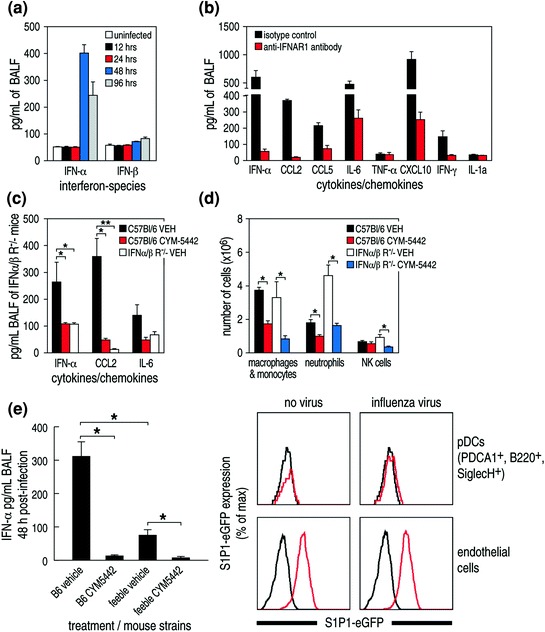Fig. 4.

Interferon-α is the predominant type 1 interferon produced early following virus infection (Panel a) and is associated with the dysregulation of cytokines and chemokines that causes a cytokine storm. Antibody to interferon type 1-α-β receptor significantly blocks release of cytokines and chemokines (Panel b). Panel c: S1P1 agonist suppression of cytokines is dependent on interferon 1. Panel d: Innate inflammatory cell recruitment is independent of interferon-α-β receptor signaling. Panel e, left: The majority (75–85 %) of interferon-α released following influenza viral infection is from plasmacytoid dendritic cells (pDCs, use of feeble mice—see text). Panel e, right: Data from S1P1-eGFP knock-in mice indicating that S1P1 receptors are not present on surfaces of pulmonary pDCs but are found, as expected, on surfaces of pulmonary endothelial cells. However, utilizing more sensitive techniques S1P1 receptors are found on pDCs (see text). Figure reprinted from Teijaro et al. (2011), with permission from Elsevier
